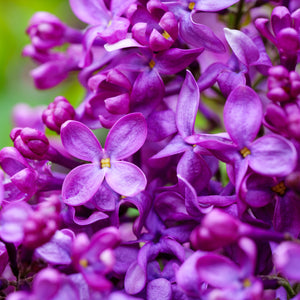Common Lilac: Nostalgia, Fragrance, and Spring Beauty
Welcome to this week’s edition of our "Plant of the Week" series. This time we’re going back to one of the most beloved and nostalgic flowering shrubs in American gardens: the Common Lilac (Syringa vulgaris). With its fragrant, pastel-colored blooms and strong, upright habit, this lilac is a spring classic that brings both emotional and visual richness to the landscape. It’s a reminder of old gardens, clipped hedges, and childhood walks—but it’s also a durable, low-maintenance choice for today’s gardeners across New Jersey and beyond.
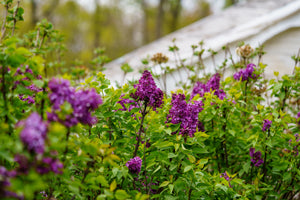
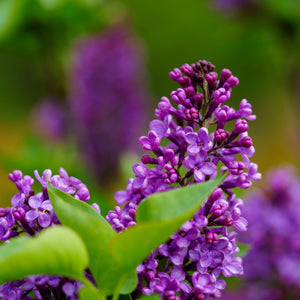
What Makes Common Lilac Special?
The Common Lilac is best known for its intensely fragrant flower clusters, which bloom in mid-to-late spring in shades of lavender, pink, blue, white, or deep purple, depending on the variety. These conical panicles, often 6 to 8 inches long, are not only showy but heavily scented, making them ideal for cutting and bringing indoors.
The plant itself grows 8 to 15 feet tall and 6 to 12 feet wide, depending on age and pruning. It forms a multi-stemmed, upright shrub with a tendency to sucker at the base, allowing it to slowly form hedgerows or natural screens over time. This makes it useful as a privacy shrub, windbreak, or back-of-border anchor.
Hardy in USDA Zones 3 to 7, Syringa vulgaris thrives in cold climates where it can meet its chill-hour requirements for bloom. It prefers full sun and well-drained, slightly alkaline soil, and it's notably deer-resistant and drought-tolerant once established.
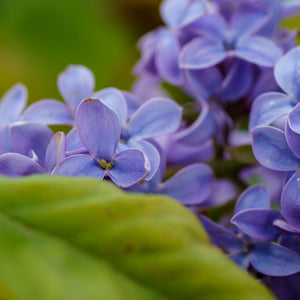
How to Use Common Lilac in the Garden
With its upright growth, fragrant flowers, and seasonal show, lilac can serve multiple roles in landscape design.
Focal Point in Spring Borders
A mature lilac in full bloom is a natural focal point, drawing attention with its scent and color. Plant one near a window, patio, or garden entrance to enjoy the fragrance up close.
Living Screens & Hedgerows
Thanks to its tall height and dense branching, lilac can be used in rows along property lines or driveways to create a flowering screen or seasonal privacy hedge. Pair with other spring bloomers like Forsythia or Viburnum for a dynamic multi-season effect.
Cottage & Heirloom Gardens
Common Lilac fits beautifully into cottage garden designs, especially when surrounded by peonies, iris, or catmint. It contributes both structure and fragrance to nostalgic planting schemes.
Cut Flower Gardens
Lilacs are a favorite among florists and gardeners alike for cutting gardens. Harvest flowers early in the morning and place them in warm water for best vase life. The scent alone is reason enough to include them.
Focal Point in a Spring-Themed Bed
Lilac serves as an excellent seasonal anchor in a bed that celebrates spring. Plant alongside bulbs, hellebores, and early perennials, then let the surrounding plants carry the interest into summer.
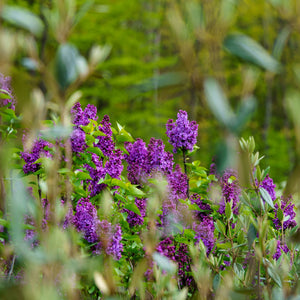
How to Care for Common Lilac
Lilacs are tough, long-lived shrubs that reward basic maintenance with reliable spring shows:
Planting: Choose a spot with full sun (at least 6 hours daily) and well-drained soil. Avoid low areas that stay wet. Slightly alkaline soil (pH 6.5–7.5) is ideal.
Watering: Water deeply during the first year to establish roots. Once mature, lilacs are drought-tolerant, though occasional watering during dry spells will improve flowering.
Pruning: Prune immediately after flowering in late spring to shape the plant and encourage new wood. Lilacs bloom on old wood, so avoid pruning in fall or winter. Remove suckers if a more formal shape is desired.
Fertilizing: Use a low-nitrogen fertilizer in early spring. Too much nitrogen promotes foliage at the expense of flowers.
Spacing: Space plants 8 to 12 feet apart depending on intended use—closer for hedging, wider for specimen planting.
Pests & Disease: Lilacs may occasionally suffer from powdery mildew, especially in humid areas. Improve airflow by thinning older stems, and plant where good circulation is available.
CONCLUSION
The Common Lilac (Syringa vulgaris) brings timeless charm, unforgettable fragrance, and springtime beauty to any garden. Whether used as a stately screen, a fragrant centerpiece, or a nostalgic nod to grandma’s backyard, this low-maintenance shrub offers something few plants can match: deep-rooted emotional appeal paired with strong horticultural performance. It’s a must-have for New Jersey gardeners who love bold blooms, traditional plantings, and scent-driven design.
Shop Our Lilac Collection
Sold Out
Sold Out
Sold Out





